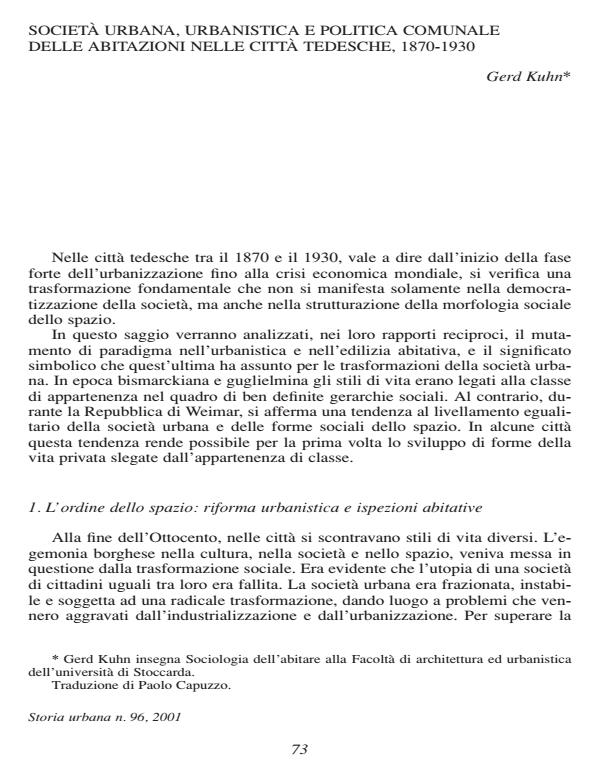Società urbana, urbanistica e politica comunale delle abitazioni nelle città tedesche, 1870-1930
Journal title STORIA URBANA
Author/s Gerd Kuhn
Publishing Year 2003 Issue 2001/96
Language Italian Pages 17 P. File size 62 KB
DOI
DOI is like a bar code for intellectual property: to have more infomation
click here
Below, you can see the article first page
If you want to buy this article in PDF format, you can do it, following the instructions to buy download credits

FrancoAngeli is member of Publishers International Linking Association, Inc (PILA), a not-for-profit association which run the CrossRef service enabling links to and from online scholarly content.
The social morphology of German cities changed dramatically during the 20th century. The segregation of private and public space was typical of this process. Being motivated by social and sanitary reasons, public intervention removed semi-open ways of living (halboffenes Lebensformen) and destroyed the old slums. At the turn of the century, a process of domestication (Verhaeuslichung) began, which changed urban communication structures as well as daily life in the cities. Thus, the social morphology of the new urban space was the result of the interaction of two forces: the functional differentiation of urban space and the development towards the closed culture of modern private life.
Gerd Kuhn, Società urbana, urbanistica e politica comunale delle abitazioni nelle città tedesche, 1870-1930 in "STORIA URBANA " 96/2001, pp , DOI: